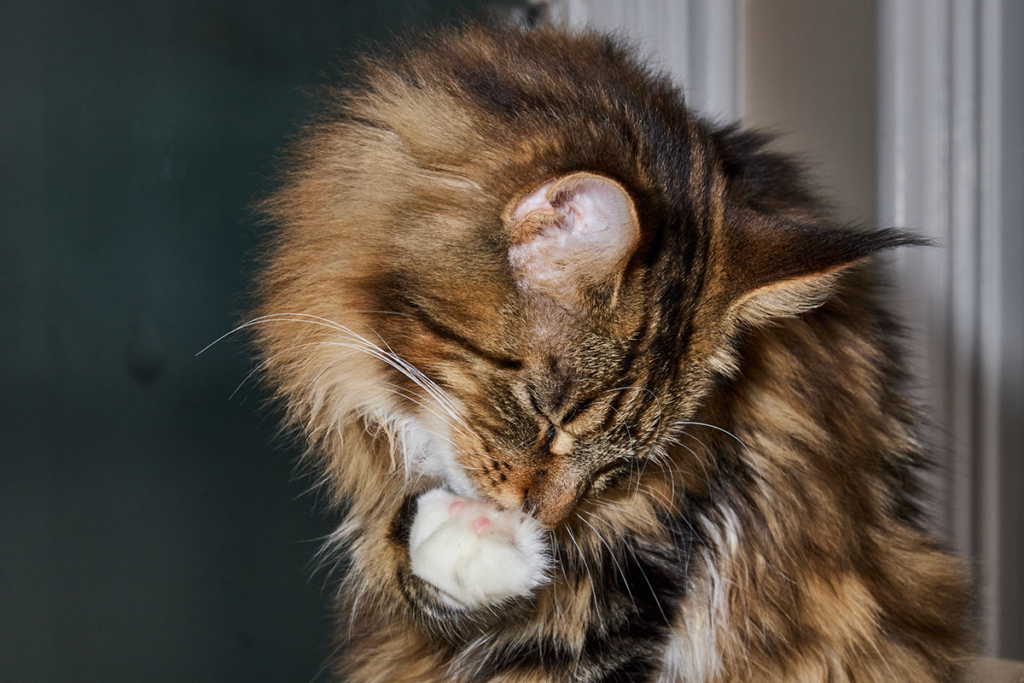Cats are known for their independent and agile nature, but they are also susceptible to allergies just like humans. Allergies in cats can manifest in various ways and can be triggered by a range of environmental, food, or genetic factors. Recognizing the signs of allergies and knowing how to treat them is essential for ensuring your feline friend remains comfortable and healthy. Here’s a guide on how to identify and manage common cat allergies.

1. Identifying Common Cat Allergies
1. Flea Allergic Dermatitis (FAD)
Flea Allergic Dermatitis is a common allergy caused by fleas. It occurs when a cat has an allergic reaction to flea saliva. Symptoms include:
- Intense Itching and Scratching: Cats may scratch excessively or bite at their skin.
- Red, Inflamed Skin: Often seen around the base of the tail or along the back.
- Hair Loss: Typically localized in areas where the cat is scratching or biting.
2. Food Allergies
Food allergies in cats can develop to various ingredients in their diet, such as proteins or grains. Signs include:
- Gastrointestinal Issues: Vomiting, diarrhea, or changes in stool consistency.
- Skin Problems: Itching, rash, or hives.
- Ear Infections: Frequent ear infections or inflammation.
3. Environmental Allergies
Environmental allergens include pollen, dust mites, mold, and household cleaners. Symptoms of environmental allergies often manifest as:
- Itchy Skin: Cats may scratch or groom excessively.
- Respiratory Issues: Sneezing, coughing, or watery eyes.
- Chronic Ear Problems: Persistent ear infections or discharge.
4. Contact Allergies
Contact allergies occur when a cat’s skin reacts to substances they come into direct contact with, such as certain fabrics, cleaning products, or plants. Symptoms include:
- Localized Skin Irritation: Redness, swelling, or rashes at the contact site.
- Itching and Scratching: Particularly in areas where the cat has direct contact with the allergen.
2. Diagnosing Cat Allergies
Veterinary Consultation:
If you suspect your cat has an allergy, consult your veterinarian. They will conduct a thorough examination and may recommend:
- Allergy Testing: Blood tests or intradermal skin tests to identify specific allergens.
- Elimination Diet: For food allergies, a special diet may be prescribed to identify the offending ingredient.
- Flea Examination: Checking for fleas and flea dirt to confirm Flea Allergic Dermatitis.
3. Treating and Managing Cat Allergies

1. Flea Control:
To manage Flea Allergic Dermatitis:
- Use Flea Preventatives: Regularly administer vet-approved flea prevention products.
- Clean the Environment: Wash bedding, vacuum regularly, and treat your home for fleas if necessary.
2. Food Allergy Management:
For food allergies:
- Switch Diets: Transition to a hypoallergenic diet or one with novel protein sources under veterinary guidance.
- Avoid Known Allergens: Eliminate common allergens like dairy, grains, or specific proteins from their diet.
3. Environmental Allergy Relief:
To alleviate environmental allergies:
- Maintain a Clean Environment: Regularly clean your home, reduce dust, and use air purifiers.
- Reduce Exposure: Keep your cat away from known allergens, such as certain plants or chemicals.
- Use Antihistamines or Steroids: Your veterinarian may prescribe medications to control allergy symptoms.
4. Contact Allergy Management:
For contact allergies:
- Identify and Remove the Allergen: Determine what is causing the reaction and remove or replace it.
- Use Hypoallergenic Products: Opt for pet-safe and hypoallergenic cleaning products and fabrics.
4. Ongoing Care and Prevention
Regular Veterinary Check-ups:
Regular visits to the vet are crucial for monitoring your cat’s health and adjusting treatments as needed. Your vet can provide ongoing guidance and adjustments to allergy management plans.
Monitor and Record Symptoms:
Keep track of your cat’s symptoms and any changes in their environment or diet. This information can help your vet make more accurate diagnoses and treatment plans.
Preventive Measures:
Implement preventive measures such as using flea preventatives, maintaining a clean living environment, and avoiding known allergens to minimize the risk of allergy flare-ups.
Conclusion
Recognizing and treating common cat allergies is essential for maintaining your feline companion’s health and comfort. By understanding the signs of allergies, working with your veterinarian to diagnose the specific type of allergy, and implementing effective treatment and management strategies, you can help ensure a happier and healthier life for your cat. With careful attention and proactive care, you can alleviate the discomfort caused by allergies and support your cat’s overall well-being.


